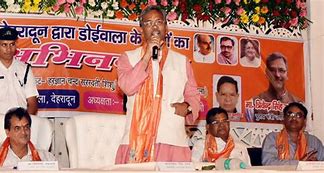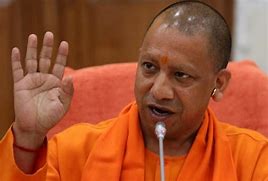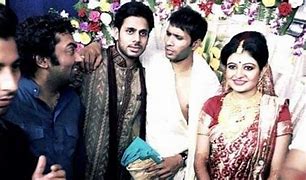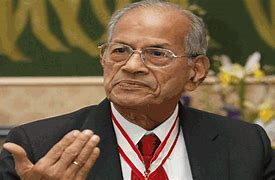Feature
Modi government will go if it doesn’t build Ram temple: VHP

New Delhi: Although BJP president Amit Shah says that the Narendra Modi government doesn’t have the mandate to address its core issues, the Vishwa Hindu Parishad (VHP), a constituent of the Sangh Parivar, disagrees.
The VHP has said that the huge mandate with which the Modi government came to power was not only for development but also to delver on its core issues, including building a grand Ram temple at Ayodhya.
The Hindu outfit also reminded the government to be ready to “face the consequences” — like the previous NDA government led by Atal Bihari Vajpayee — if it did not deliver on the core issues.
“The mandate which the BJP got in last general election was not merely for development. People expect that they will address the core issues too,” VHP spokesperson and national secretary Surendra Jain told IANS.
“Despite several comments on the issue by senior BJP leaders, our hope is still alive. We expect that this government will fulfill its commitment to construct a Ram temple at Ayodhya,” he added.
Bharatiya Janata Party president Shah said last month that the party needs 370 seats in the Lok Sabha to address its core issues. Home Minister Rajnath Singh said earlier that the core issues were not the government’s priority for now as it was focussed on development.
Jain said building the Ram temple was also in the BJP manifesto. “How can they backtrack on the issue?” he asked.
Jain said the previous NDA government didn’t address these issues, and the voters had shown them the door. “BJP leaders should learn from their mistakes of the past.”
He said a committee of holy men and spiritual leaders would soon meet Prime Minister Narendra Modi to urge him to construct the Ram temple.
Recently, the Shiv Sena, another BJP ally, had said that the prime minister should reveal his ‘Mann Ki Baat’ on the contentious issue of the temple in Ayodhya.
Rajya Sabha MP Vinay Katiyar, who was the face of the Ayodhya movement in the 1990s, has said that the government should resolve the issue through legislation or dialogue and not wait for the Supreme Court’s verdict.
The Allahabad High Court’s verdict on the disputed Babri Masjid-Ram Janambhoomi issue is on appeal before the Supreme Court.
Entertainment
Meghalaya Reserves Legalized Gambling and Sports Betting for Tourists

The State Scores Extra High on Gaming-Friendly Industry Index
Meghalaya scored 92.85 out of 100 possible points in a Gaming Industry Index and proved to be India’s most gaming-friendly state following its recent profound legislation changes over the field allowing land-based and online gaming, including games of chance, under a licensing regime.
The index by the UK India Business Council (UKIBC) uses a scale of 0 to 100 to measure the level of legalisation on gambling and betting achieved by a state based on the scores over a set of seven different games – lottery, horse racing, betting on sports, poker, rummy, casino and fantasy sports
Starting from February last year, Meghalaya became the third state in India’s northeast to legalise gambling and betting after Sikkim and Nagaland. After consultations with the UKIBC, the state proceeded with the adoption of the Meghalaya Regulation of Gaming Act, 2021 and the nullification of the Meghalaya Prevention of Gambling Act, 1970. Subsequently in December, the Meghalaya Regulation of Gaming Rules, 2021 were notified and came into force.
All for the Tourists
The move to legalise and license various forms of offline and online betting and gambling in Meghalaya is aimed at boosting tourism and creating jobs, and altogether raising taxation revenues for the northeastern state. At the same time, the opportunities to bet and gamble legally will be reserved only for tourists and visitors.
“We came out with a Gaming Act and subsequently framed the Regulation of Gaming Rules, 2021. The government will accordingly issue licenses to operate games of skill and chance, both online and offline,” said James P. K. Sangma, Meghalaya State Law and Taxation Minister speaking in the capital city of Shillong. “But the legalized gambling and gaming will only be for tourists and not residents of Meghalaya,” he continued.
To be allowed to play, tourists and people visiting the state for work or business purposes will have to prove their non-resident status by presenting appropriate documents, in a process similar to a bank KYC (Know Your Customer) procedure.
Meghalaya Reaches Out to a Vast Market
With 140 millions of people in India estimated to bet regularly on sports, and a total of 370 million desi bettors around prominent sporting events, as per data from one of the latest reports by Esse N Videri, Meghalaya is set to reach out and take a piece of a vast market.
Estimates on the financial value of India’s sports betting market, combined across all types of offline channels and online sports and cricket predictions and betting platforms, speak about amounts between $130 and $150 billion (roughly between ₹9.7 and ₹11.5 lakh crore).
Andhra Pradesh, Telangana and Delhi are shown to deliver the highest number of bettors and Meghalaya can count on substantial tourists flow from their betting circles. The sports betting communities of Karnataka, Maharashtra, Uttar Pradesh and Haryana are also not to be underestimated.
Among the sports, cricket is most popular, registering 68 percent of the total bet count analyzed by Esse N Videri. Football takes second position with 11 percent of the bets, followed by betting on FIFA at 7 percent and on eCricket at 5 percent. The last position in the Top 5 of popular sports for betting in India is taken by tennis with 3 percent of the bet count.
Local Citizens will Still have Their Teer Betting
Meghalaya residents will still be permitted to participate in teer betting over arrow-shooting results. Teer is a traditional method of gambling, somewhat similar to a lottery draw, and held under the rules of the Meghalaya Regulation of the Game of Arrow Shooting and the Sale of Teer Tickets Act, 2018.
Teer includes bettors wagering on the number of arrows that reach the target which is placed about 50 meters away from a team of 20 archers positioned in a semicircle.
The archers shoot volleys of arrows at the target for ten minutes, and players place their bets choosing a number between 0 and 99 trying to guess the last two digits of the number of arrows that successfully pierce the target.
If, for example, the number of hits is 256, anyone who has bet on 56 wins an amount eight times bigger than their wager.























